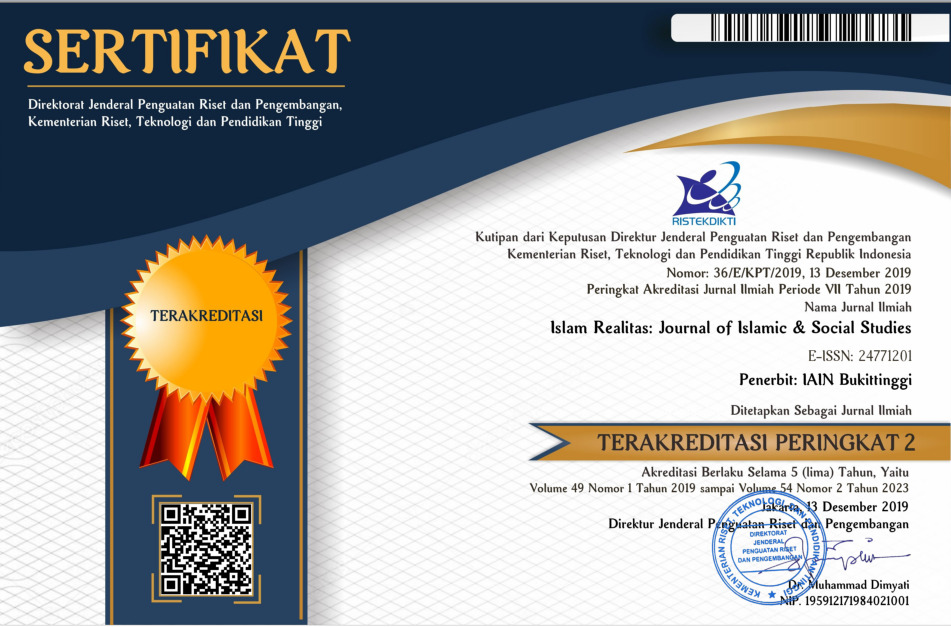COMPARING PATHWAYS AND OUTCOME FOR PATANI MUSLIM WOMEN OF DIFFERENT EDUCATION SYSTEMS SINCE 1959
Downloads
A new era of resolving the conflicts in the three southern border provinces of Thailand began in the time of Field Marshal Sarit Thanarat (1959-1963), with an assimilationist policy toward the Malay Muslims of the three southern provinces. This involved not only assimilation through educational, economic, and social development policies but also assimilation of the Malay Muslims in the southern border provinces with the Muslims of the central areas of Thailand through variou sgovernment projects, such as the dhammacharika project. These projects initially began with an emphasis on the religious leaders of the communities, on bringing Muslim students on field trips to Bangkok, and on providing instruction and training for Muslim women. All of these projects received support from various Muslim associations and organizations in central Thailand. Eventhough this assimilationist policy might be viewed as destroying the religious and cultural identity of Malay-Muslims in Yala, Pattani, and Narathiwat provinces. The field research data show that not only their education routes correlate with differences of status, family background, class, and degree of austerity inreligious practice, but the differences among the Muslim countries where they studied also have important effects on their identity formation and consequent Malay-Muslim consciousness. All of these differences also had significant effects on their social roles and statuses after returning to work in their hometown areas, and have also had important effects on the ways in which Muslim women of this area display their piety.
Â
Era baru menyelesaikan konflik etnik Thailand di tiga provinsi perbatasan selatan telah dimulai pada saat Field Marshal Sarit Thanarat (1959-1963), dengan kebijakan asimilasi terhadap Muslim Melayu. Hal ini tidak hanya melibatkan asimilasi melalui kebijakan pendidikan, ekonomi, dan sosial tetapi juga asimilasi Muslim Mayu dengan Muslim dari daerah Thai pusat melalui berbagai proyek pemerintah, seperti proyek dhammacharika. Proyek-proyek ini awalnya dimulai dengan penekanan pada para pemimpin agama dari masyarakat, untuk membawa siswa Muslim dengan kunjungan lapangan ke Bangkok, dan pelatihan bagi perempuan Muslim. Semua proyek ini mendapat dukungan dari berbagai asosiasi dan organisasi Muslim di Thailand pusat. Meskipun kebijakan asimilasi ini mungkin dipandang merusak identitas agama dan budaya Melayu-Muslim di Yala, Pattani, dan Provinsi Narathiwat. Data penelitian lapangan menunjukkan bahwa mereka mampu berkorelasi dengan perbedaan status, latar belakang keluarga, kelas, tetapi juga memiliki efek penting pada pembentukan identitas dan kesadaran Melayu-Muslim. Semua perbedaan memiliki efek yang signifikan terhadap peran setelah kembali bekerja di kampung halaman, dan juga memiliki efek penting wanita Muslim untuk menampilkan kesalehan mereka.
Aphornsuvan, Thanet, “Nation-State and the Muslim Identity in the Southern Unrest and Violence,†in Understanding conflict and approaching peace in Southern Thailand, eds. Imtiyaz Yusof and Lars Peter Schmidt, (second revised edition), (Bangkok: Konard-Adenauer-Stifung, 2006)
Guan, Hock Lee, “Globalisation and Ethnic Integration in Malaysian Education,†in Malaysia : Recent Trends and Challenges, Saw Swee Hock and K. Kesavapany, eds, (Singapore: Institute of Southeast Asian Studies, 2006)
Horstmann, Alexander., Class, Culture and Space : The Construction and Shaping of Communal Space in South Thailand, (Bielefeld: Transaction Publishers, 2002)
Joll, Christopher M., “Religion and Conflict in Southern Thailand : Beyond Rounding Up the Usual Suspects,†Contemporary Southeast Asia,Vol 32, Number 2. 2010.
Narongraksakhet, Ibrahem, “Educational Change for Building Peace in Southern Border Provinces of Thailand, in Understanding conflict and approaching peace in Southern Thailand, eds. Imtiyaz Yusof and Lars Peter Schmidt, (second revised edition), (Bangkok: Konard-Adenauer- Stifung, 2006)
Pitsuwan, Surin, Islam and Malay Nationalism : A Case Study of the Malay-Muslims of Southern Thailand, (Bangkok: Thai Khadi Institute, Thammasat University, 1985)
Authors who publish with this journal agree to the following terms:
- Authors retain copyright and grant the journal right of first publication with the work simultaneously licensed under a Creative Commons Attribution License that allows others to share the work with an acknowledgment of the work's authorship and initial publication in this journal.
- Authors are able to enter into separate, additional contractual arrangements for the non-exclusive distribution of the journal's published version of the work (e.g., post it to an institutional repository or publish it in a book), with an acknowledgment of its initial publication in this journal.
- Authors are permitted and encouraged to post their work online (e.g., in institutional repositories or on their website) prior to and during the submission process, as it can lead to productive exchanges, as well as earlier and greater citation of published work (See The Effect of Open Access).









